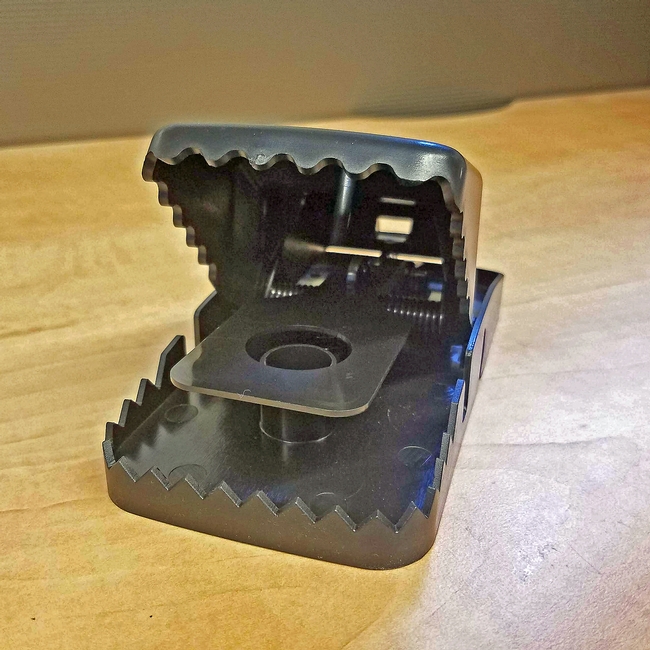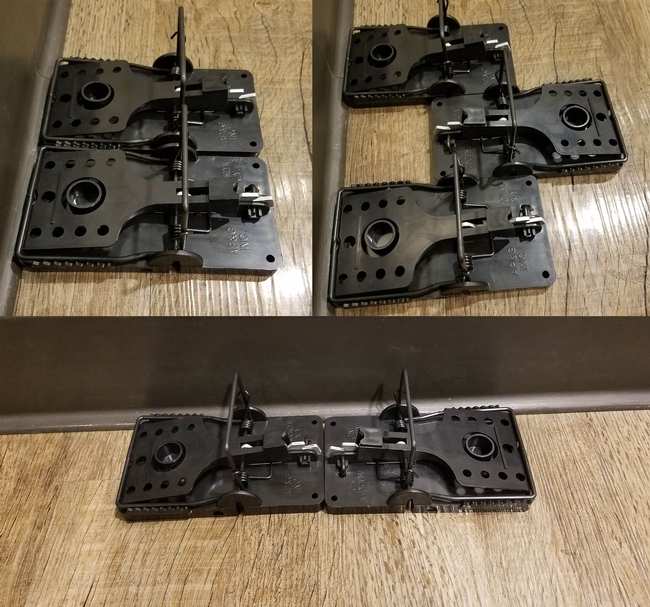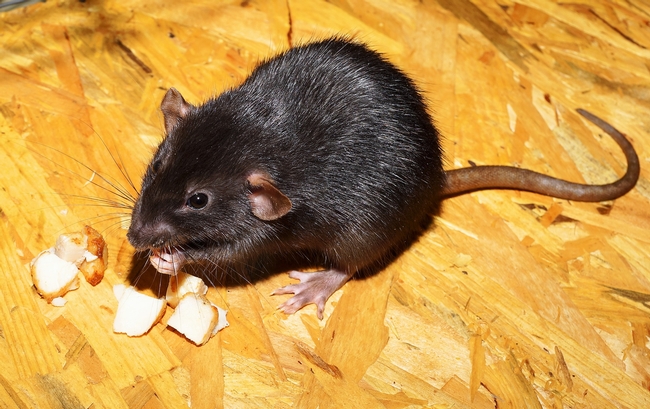Trapping is the safest and most effective method for controlling rats and mice in and around homes, garages and other structures. Rodents that live in close association with humans are called commensal rodents. Rats and mice are the most frequently encountered commensal rodents in California.
Selecting the correct trap
Before trapping, make sure you know what rodent pest you have. It is a very common mistake to select the wrong size trap when you have not yet determined whether you have mice or rats (and the correctly identified rat species).

Select traps that you can easily set. Older designs of rat and mouse traps can be difficult to operate, so if you are having trouble setting these traps, consider buying a newer design.
Choose the right attractant
Food attractant is a very important part of successful snap trapping. Select an attractant the rodent would likely find locally available or that you know they are already feeding on. The amount to use is also critical. Select a pea-sized amount of the food attractant and carefully place it on the trigger or in the trap recess before you set the trap.
Food is not the only thing that can be used to lure rodents to your snap traps. When trapping mice, you can try to use small bits of cotton or dental floss, as the mice will try and collect these for nesting material.
Be cautious about using peanut butter in areas where you are unsure who will access the traps. Many people have peanut allergies.
When using snap traps for rats, it is good practice to prebait your traps. This involves putting the traps with a food attractant in areas where you find rat evidence while leaving them unset for a couple of days until this attractant has been removed multiple times. Because rats are neophobic (afraid of new things), you want to make sure the adults as well as the juveniles become comfortable with the traps. Failure to prebait may result in the capture of juveniles only. The breeding adults are the most important targets.
Use multiple traps in the right places
Rodents are very prolific breeders, and there is never just one or two of them; there are many. Therefore, it is important to ensure that you set multiple traps.

Be mindful of nontarget wildlife
Rats and mice might not be the only wildlife roaming around the yard, so be aware of other animals (nontargets) that might get caught in traps. Nontarget wildlife, such as birds, and even larger wildlife, such as raccoons, can fall victim to rodent snap traps. Set traps only during the night, but leave them where they are during the day, making sure they are not set. This greatly reduces trapping animals that are mostly active during daylight hours. To exclude other larger wildlife, try placing traps under a secured (weighted or staked down) milk crate.
Securing the traps by staking or tying can help somewhat with nontarget issues too. One other benefit of securing your traps is that they will be easy to find when they are triggered. Predators can carry away dead carcasses and often will take traps too if rodents are attached, making it difficult to find traps and use them again.
Safely dispose dead rodents
Successful trapping involves disposing of the carcasses. Always wear gloves when removing rodents from traps or even when working with traps that have come into contact with rodents, dead or alive. Rodents are vectors of many diseases, so even when just moving dead rodents, it is important to protect yourself.
If you catch a rodent, remove the rodent from the trap, double bag it and put it in the trash. Many municipalities do not allow for the disposal of carcasses in municipal waste so be sure to consult your local ordinances before disposal.
If you don't want to remove the rodent from the trap you can throw both the rodent and the trap away. There are also traps available that catch mice inside the trap and kill them; you then dispose of the whole trap. These types of traps are not available for rats.
Don't give up!
You must persevere with your rodent problem when trapping. It can take a long time to effectively manage a rodent issue in your home or yard. Be persistent. An ongoing trapping program might be necessary in order to keep the rodent problem at the desired threshold. Rats and mice are prolific breeders, so as you trap these rodents out, more may eventually come and take advantage of the resources in your area.
Be sure to check out the Pest Notes Rats and Pest Notes House Mouse for tips and information on sanitation, exclusion, and other methods that may help you successfully manage your rodent issues.
[Original article published as Snap Traps for Rats and Mice in the Winter 2019 issue of the Retail Newsletter and reprinted in Pests in the Urban Landscape.]

